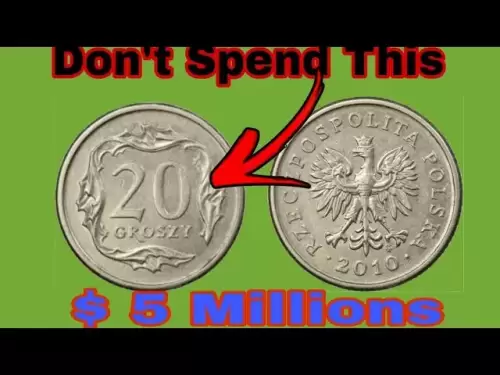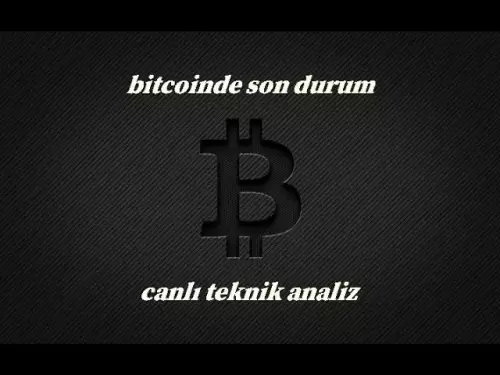-
 Bitcoin
Bitcoin $108,562.4295
0.46% -
 Ethereum
Ethereum $2,533.9553
1.52% -
 Tether USDt
Tether USDt $1.0002
-0.01% -
 XRP
XRP $2.2542
2.23% -
 BNB
BNB $662.4567
1.48% -
 Solana
Solana $151.4114
3.48% -
 USDC
USDC $0.9999
0.00% -
 TRON
TRON $0.2860
0.91% -
 Dogecoin
Dogecoin $0.1685
3.72% -
 Cardano
Cardano $0.5809
1.63% -
 Hyperliquid
Hyperliquid $39.2916
1.85% -
 Sui
Sui $2.8874
0.85% -
 Bitcoin Cash
Bitcoin Cash $496.5801
2.72% -
 Chainlink
Chainlink $13.3582
2.48% -
 UNUS SED LEO
UNUS SED LEO $9.0279
0.07% -
 Avalanche
Avalanche $18.0773
2.30% -
 Stellar
Stellar $0.2426
3.05% -
 Toncoin
Toncoin $2.9086
6.01% -
 Shiba Inu
Shiba Inu $0.0...01170
2.97% -
 Hedera
Hedera $0.1587
3.47% -
 Litecoin
Litecoin $87.4596
1.13% -
 Monero
Monero $317.0425
0.73% -
 Polkadot
Polkadot $3.3778
1.90% -
 Dai
Dai $0.9999
-0.01% -
 Ethena USDe
Ethena USDe $1.0001
-0.01% -
 Bitget Token
Bitget Token $4.4095
0.63% -
 Uniswap
Uniswap $7.3593
6.80% -
 Pepe
Pepe $0.0...09910
3.64% -
 Aave
Aave $274.7388
2.68% -
 Pi
Pi $0.4607
0.48%
What proportion of SUI's callback in an upward trend is suitable for entry?
For optimal SUI entry during an upward trend, identify callbacks at 38.2% or 50% Fibonacci levels and confirm with technical indicators like moving averages and RSI.
Apr 26, 2025 at 03:28 am

When considering the optimal entry point for SUI during an upward trend, understanding the concept of callbacks and their proportions is crucial. A callback, or a retracement, refers to a temporary decline in the price of an asset within an overall bullish trend. For SUI, determining the right proportion of this callback for entry can significantly impact the potential success of your investment. The key is to identify a level where the price has pulled back enough to offer a good entry point but not so far that it signals a potential reversal of the trend.
Understanding Callbacks in Cryptocurrency
Callbacks are a common occurrence in the cryptocurrency market, including for assets like SUI. They are essentially corrections within a prevailing trend, providing opportunities for investors to enter at a more favorable price. The extent of a callback can vary, often measured as a percentage of the previous upward movement. Common retracement levels include 23.6%, 38.2%, 50%, 61.8%, and 78.6%, which are derived from the Fibonacci sequence and widely used in technical analysis.
Analyzing SUI's Upward Trend
To determine the suitable proportion of SUI's callback for entry, it's essential to first analyze the asset's upward trend. This involves looking at historical price data, chart patterns, and technical indicators. For instance, if SUI has been on an upward trajectory, observe the peaks and troughs to understand the typical range of its callbacks. This analysis will help you gauge whether a callback is minor or significant within the context of the ongoing trend.
Identifying Key Retracement Levels
When it comes to SUI, key retracement levels to consider for entry are typically the 38.2% and 50% Fibonacci levels. These levels often represent a good balance between a meaningful pullback and a point where the upward trend is likely to resume. Here's how to identify these levels:
- 38.2% Retracement Level: This level suggests a moderate pullback. If SUI's price retraces to this level, it might be an attractive entry point as it indicates the market is still bullish but has corrected enough to offer a better price.
- 50% Retracement Level: This level represents a more significant pullback but still within the realm of a continuing upward trend. Entering at this level could provide a better risk-reward ratio, as the price has fallen further but the trend remains intact.
Using Technical Indicators for Confirmation
While Fibonacci levels are useful, it's important to use technical indicators to confirm the validity of these retracement levels. Some common indicators include:
- Moving Averages: Look for the price to bounce off a moving average, such as the 50-day or 200-day moving average, which can act as support during a callback.
- Relative Strength Index (RSI): An RSI reading below 50 but above 30 can indicate that the asset is oversold and due for a rebound.
- MACD (Moving Average Convergence Divergence): A bullish crossover in the MACD can signal that the upward trend is likely to continue after a callback.
Practical Steps for Entering SUI During a Callback
To practically apply the knowledge of callbacks and retracement levels, follow these steps for entering a position in SUI during an upward trend:
- Monitor SUI's Price Action: Keep a close eye on SUI's price chart to identify when an upward trend is in place.
- Identify the Peak: Note the highest price point in the current upward trend.
- Calculate Retracement Levels: Use the peak price and the subsequent low to calculate the 38.2% and 50% retracement levels.
- Watch for Price to Reach Retracement Levels: Wait for the price to pull back to one of these levels.
- Confirm with Technical Indicators: Use moving averages, RSI, and MACD to confirm that the pullback is likely to be temporary.
- Enter the Position: Once the price reaches the desired retracement level and the indicators confirm the trend, enter your position in SUI.
Risk Management and Position Sizing
When entering SUI during a callback, it's crucial to consider risk management and position sizing. Determine how much of your portfolio you are willing to allocate to SUI and set stop-loss orders to limit potential losses. A common practice is to set a stop-loss just below the retracement level you entered at, ensuring that you exit the trade if the price breaks down further, indicating a possible trend reversal.
Monitoring the Trade
After entering a position in SUI at a callback, monitor the trade closely. Watch for signs that the upward trend is resuming, such as the price breaking above recent highs or the technical indicators turning bullish again. Adjust your stop-loss orders accordingly to lock in profits as the price moves in your favor.
Frequently Asked Questions
Q: Can I use other retracement levels besides 38.2% and 50% for SUI?
A: Yes, other retracement levels such as 23.6%, 61.8%, and 78.6% can also be used. However, the 38.2% and 50% levels are often considered more reliable for identifying entry points during an upward trend.
Q: How do I know if a callback in SUI is just a temporary dip or the start of a new downtrend?
A: To differentiate between a temporary dip and the start of a new downtrend, look at the broader market context, volume during the callback, and the behavior of technical indicators. A temporary dip typically sees a quick recovery with increasing volume, while a new downtrend might show sustained selling pressure and negative technical signals.
Q: Should I enter a position in SUI immediately after it hits a retracement level, or should I wait for confirmation?
A: It's generally safer to wait for confirmation from technical indicators before entering a position. This approach helps reduce the risk of entering during a false breakout or a deeper retracement.
Q: How can I adjust my strategy if SUI's volatility increases during an upward trend?
A: If SUI's volatility increases, consider tightening your stop-loss orders and reducing your position size to manage risk. Additionally, you may want to use shorter time frames for analysis to capture more precise entry and exit points.
Disclaimer:info@kdj.com
The information provided is not trading advice. kdj.com does not assume any responsibility for any investments made based on the information provided in this article. Cryptocurrencies are highly volatile and it is highly recommended that you invest with caution after thorough research!
If you believe that the content used on this website infringes your copyright, please contact us immediately (info@kdj.com) and we will delete it promptly.
- BNB, Binance, and CZ: What's the Buzz?
- 2025-07-07 06:50:12
- Hedera Hashgraph: ETF Buzz and Bullish Charts – HBAR to the Moon?
- 2025-07-07 06:30:12
- BlockDAG, Pi Network, and SUI Stable: Navigating the Crypto Landscape in '25
- 2025-07-07 07:10:13
- SYRUP Token's Sweet Ascent: TVL Surges and DeFi Growth on Maple Finance
- 2025-07-07 07:15:13
- Bitcoin, Listed Companies, and ETFs: A New York Minute on Crypto Trends
- 2025-07-07 06:30:12
- Stablecoins, Redot Pay, and Korea: A Glimpse into the Future of Payments
- 2025-07-07 07:20:14
Related knowledge
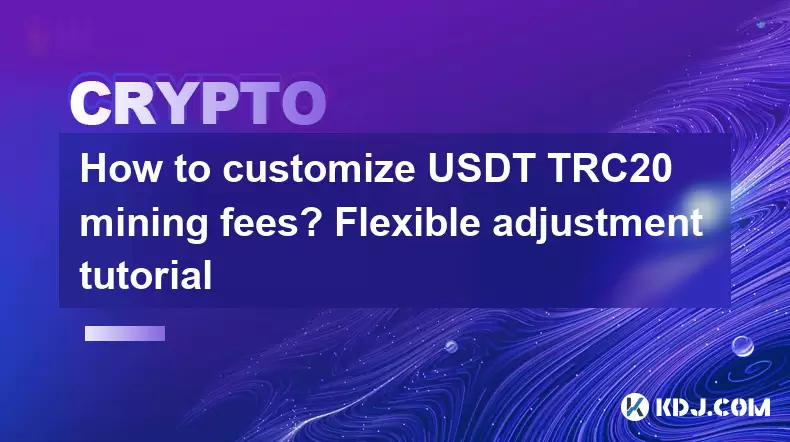
How to customize USDT TRC20 mining fees? Flexible adjustment tutorial
Jun 13,2025 at 01:42am
Understanding USDT TRC20 Mining FeesMining fees on the TRON (TRC20) network are essential for processing transactions. Unlike Bitcoin or Ethereum, where miners directly validate transactions, TRON uses a delegated proof-of-stake (DPoS) mechanism. However, users still need to pay bandwidth and energy fees, which are collectively referred to as 'mining fe...
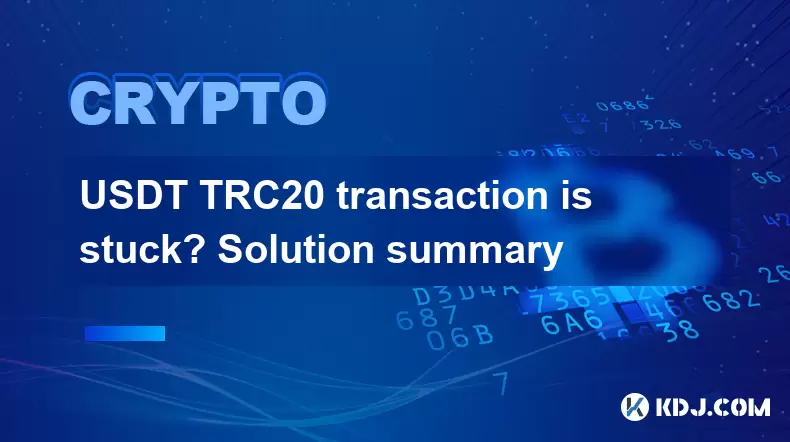
USDT TRC20 transaction is stuck? Solution summary
Jun 14,2025 at 11:15pm
Understanding USDT TRC20 TransactionsWhen users mention that a USDT TRC20 transaction is stuck, they typically refer to a situation where the transfer of Tether (USDT) on the TRON blockchain has not been confirmed for an extended period. This issue may arise due to various reasons such as network congestion, insufficient transaction fees, or wallet-rela...
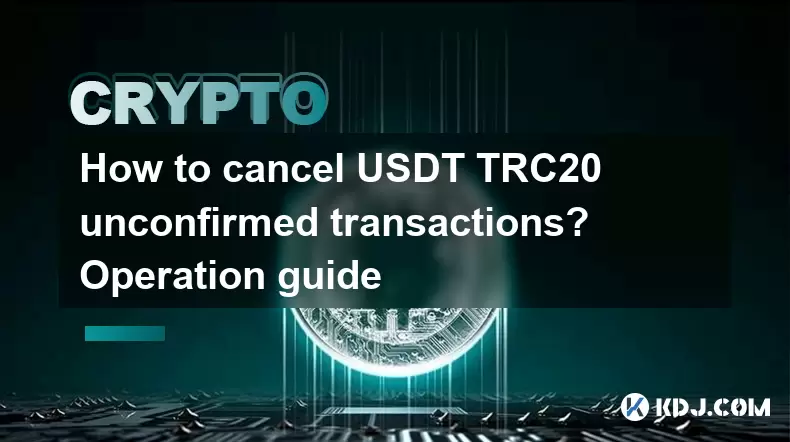
How to cancel USDT TRC20 unconfirmed transactions? Operation guide
Jun 13,2025 at 11:01pm
Understanding USDT TRC20 Unconfirmed TransactionsWhen dealing with USDT TRC20 transactions, it’s crucial to understand what an unconfirmed transaction means. An unconfirmed transaction is one that has been broadcasted to the blockchain network but hasn’t yet been included in a block. This typically occurs due to low transaction fees or network congestio...
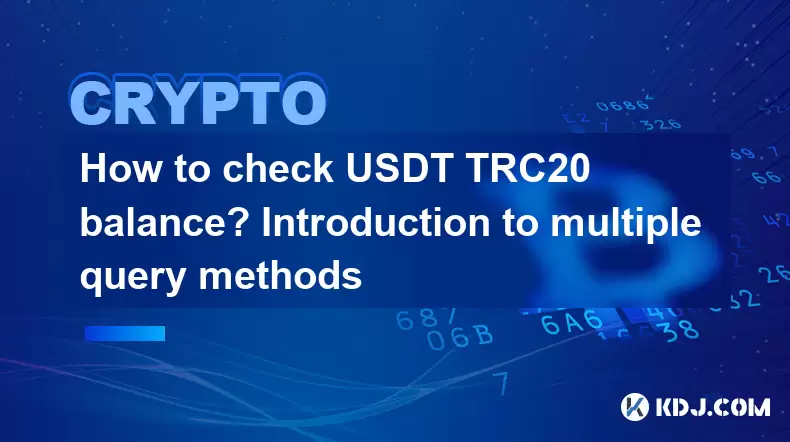
How to check USDT TRC20 balance? Introduction to multiple query methods
Jun 21,2025 at 02:42am
Understanding USDT TRC20 and Its ImportanceUSDT (Tether) is one of the most widely used stablecoins in the cryptocurrency market. It exists on multiple blockchain networks, including TRC20, which operates on the Tron (TRX) network. Checking your USDT TRC20 balance accurately is crucial for users who hold or transact with this asset. Whether you're sendi...
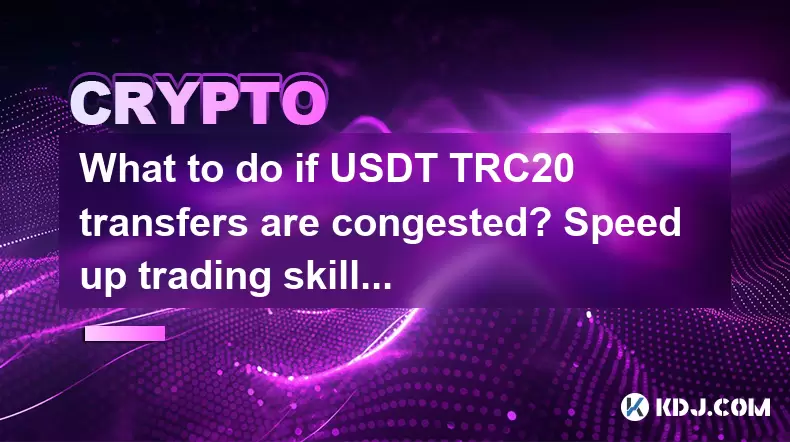
What to do if USDT TRC20 transfers are congested? Speed up trading skills
Jun 13,2025 at 09:56am
Understanding USDT TRC20 Transfer CongestionWhen transferring USDT TRC20, users may occasionally experience delays or congestion. This typically occurs due to network overload on the TRON blockchain, which hosts the TRC20 version of Tether. Unlike the ERC20 variant (which runs on Ethereum), TRC20 transactions are generally faster and cheaper, but during...
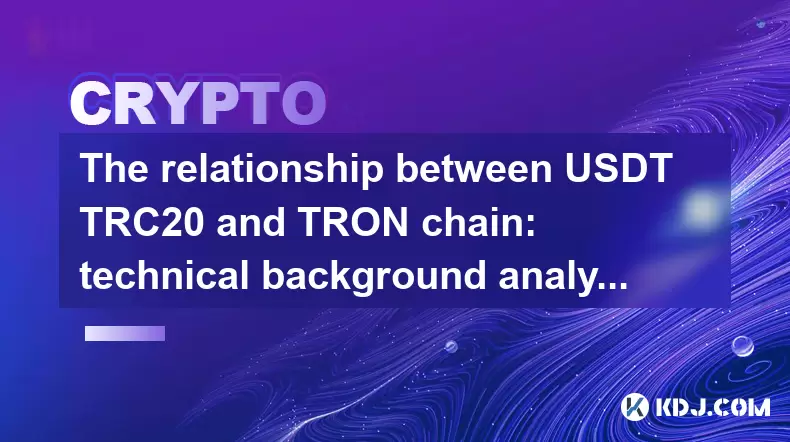
The relationship between USDT TRC20 and TRON chain: technical background analysis
Jun 12,2025 at 01:28pm
What is USDT TRC20?USDT TRC20 refers to the Tether (USDT) token issued on the TRON blockchain using the TRC-20 standard. Unlike the more commonly known ERC-20 version of USDT (which runs on Ethereum), the TRC-20 variant leverages the TRON network's infrastructure for faster and cheaper transactions. The emergence of this version came as part of Tether’s...

How to customize USDT TRC20 mining fees? Flexible adjustment tutorial
Jun 13,2025 at 01:42am
Understanding USDT TRC20 Mining FeesMining fees on the TRON (TRC20) network are essential for processing transactions. Unlike Bitcoin or Ethereum, where miners directly validate transactions, TRON uses a delegated proof-of-stake (DPoS) mechanism. However, users still need to pay bandwidth and energy fees, which are collectively referred to as 'mining fe...

USDT TRC20 transaction is stuck? Solution summary
Jun 14,2025 at 11:15pm
Understanding USDT TRC20 TransactionsWhen users mention that a USDT TRC20 transaction is stuck, they typically refer to a situation where the transfer of Tether (USDT) on the TRON blockchain has not been confirmed for an extended period. This issue may arise due to various reasons such as network congestion, insufficient transaction fees, or wallet-rela...

How to cancel USDT TRC20 unconfirmed transactions? Operation guide
Jun 13,2025 at 11:01pm
Understanding USDT TRC20 Unconfirmed TransactionsWhen dealing with USDT TRC20 transactions, it’s crucial to understand what an unconfirmed transaction means. An unconfirmed transaction is one that has been broadcasted to the blockchain network but hasn’t yet been included in a block. This typically occurs due to low transaction fees or network congestio...

How to check USDT TRC20 balance? Introduction to multiple query methods
Jun 21,2025 at 02:42am
Understanding USDT TRC20 and Its ImportanceUSDT (Tether) is one of the most widely used stablecoins in the cryptocurrency market. It exists on multiple blockchain networks, including TRC20, which operates on the Tron (TRX) network. Checking your USDT TRC20 balance accurately is crucial for users who hold or transact with this asset. Whether you're sendi...

What to do if USDT TRC20 transfers are congested? Speed up trading skills
Jun 13,2025 at 09:56am
Understanding USDT TRC20 Transfer CongestionWhen transferring USDT TRC20, users may occasionally experience delays or congestion. This typically occurs due to network overload on the TRON blockchain, which hosts the TRC20 version of Tether. Unlike the ERC20 variant (which runs on Ethereum), TRC20 transactions are generally faster and cheaper, but during...

The relationship between USDT TRC20 and TRON chain: technical background analysis
Jun 12,2025 at 01:28pm
What is USDT TRC20?USDT TRC20 refers to the Tether (USDT) token issued on the TRON blockchain using the TRC-20 standard. Unlike the more commonly known ERC-20 version of USDT (which runs on Ethereum), the TRC-20 variant leverages the TRON network's infrastructure for faster and cheaper transactions. The emergence of this version came as part of Tether’s...
See all articles

























